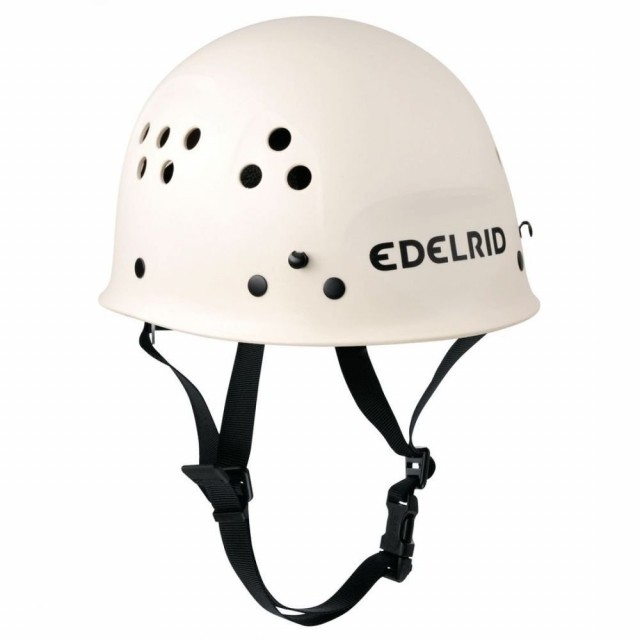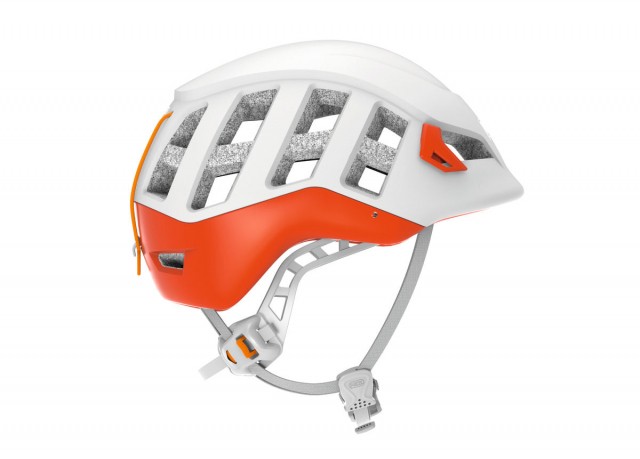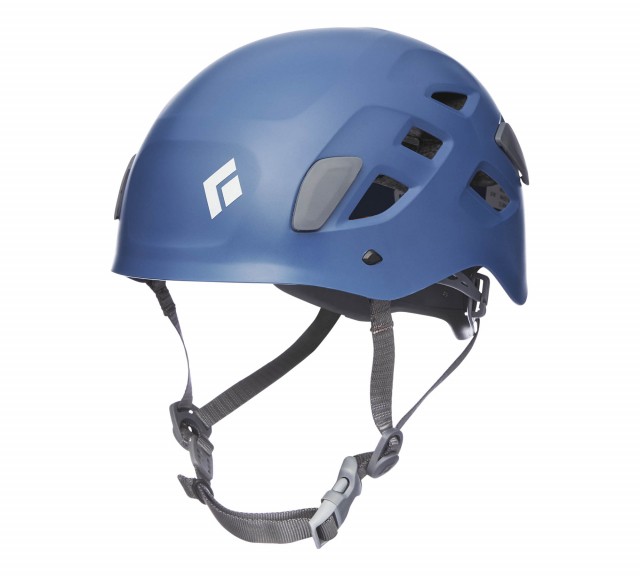How do I choose the right helmet?
All canyoning, caving, outdoor sports helmets are intended to protect your head in the event of a sudden impact, but different models do this in different ways.
A well-shaped helmet is the best protection you can buy for your gray matter. This, combined with a good rating for the various outdoor sports, offers the best protection against unwanted collisions.
The design you choose will depend on the fit and the type of outdoor sport the helmet will be used for. Are you going ice climbing? Then you run a greater risk of stone chips and the insulation of the helmet is a nice bonus. Choose a sturdy helmet without too many ventilation holes, make sure a hat fits under the helmet. Do you mainly climb in warm weather? Then look for a model with many ventilation holes, these promote good air circulation.
Check out CanyonZone's range of helmets.
Models Outdoor Helmet
- Shell helmet
 Edelrid Ultralight Climbing Helmet This durable, traditional helmet offers a solid exterior supported by an interior that features a strap system of cross-tensioned straps – just like a construction helmet. The ventilation of shell helmets is generally good, because there is air between the shell and the head. Impact energy is primarily absorbed by elastic deformation, ie the exterior deforms on impact and then, in most cases, returns to its original shape. This absorbs the energy of a vertical impact, such as a falling rock. Scale models are particularly durable, but relatively heavy.
Edelrid Ultralight Climbing Helmet This durable, traditional helmet offers a solid exterior supported by an interior that features a strap system of cross-tensioned straps – just like a construction helmet. The ventilation of shell helmets is generally good, because there is air between the shell and the head. Impact energy is primarily absorbed by elastic deformation, ie the exterior deforms on impact and then, in most cases, returns to its original shape. This absorbs the energy of a vertical impact, such as a falling rock. Scale models are particularly durable, but relatively heavy. - Foam helmet
 This lighter helmet features a polystyrene or polypropylene foam base topped with a thin, hard shell. Energy is absorbed by plastic deformation, ie the foam deforms permanently when a serious impact occurs. This absorbs the energy and protects the skull. A strong point of foam helmets is that they offer relatively good protection against impact from the front, rear and sides. This type of impact is especially common in the event of a fall.
This lighter helmet features a polystyrene or polypropylene foam base topped with a thin, hard shell. Energy is absorbed by plastic deformation, ie the foam deforms permanently when a serious impact occurs. This absorbs the energy and protects the skull. A strong point of foam helmets is that they offer relatively good protection against impact from the front, rear and sides. This type of impact is especially common in the event of a fall.
Foam helmets are lighter than shell helmets and look more flashy. A foam helmet should be discarded after a serious impact because internal damage is not always visible on the outside. Foam helmets are on average the highest in price. Foam helmets are substantially lighter than shell helmets and hybrid helmets, making them extremely popular with alpinists on long mountain trips.
- Hybrid helmet
 This type of helmet combines the hard shell of the shell helmet with the shock-absorbing foam of the foam helmet. The weight of a hybrid helmet is in between the two previous types. This type of helmet is the most sold due to its durability, relatively low price and acceptable weight.
This type of helmet combines the hard shell of the shell helmet with the shock-absorbing foam of the foam helmet. The weight of a hybrid helmet is in between the two previous types. This type of helmet is the most sold due to its durability, relatively low price and acceptable weight.
Fit of outdoor sports helmets
Once you know what you're looking for, fit is top priority. A helmet that fits well is easier to use, a lot more comfortable and also offers better protection. A helmet with a bad fit quickly becomes a burden, preferring to be left at home or in the car. It is important to put the helmet on properly. Make sure the front reaches to the center of your forehead. Avoid tilting the helmet backwards, which leaves your forehead unprotected.
Adjustability: Many climbing helmets can be adjusted to optimize the fit. After customizing the fit, but before the chinstrap buckle is attached, you can shake the head from side to side to test if it is actually seated properly. The helmet should feel reasonably snug even without the chinstrap closed.
Specifications for an outdoor sports helmet
- Weight: Are you planning a long trip? When you have a lot of equipment to transport, the weight of your helmet can be an important consideration. Consider lightweight foam models, which sometimes weigh less than half the weight of the heavier hybrid and shell helmets.
- Headlamps: Heading out before dawn is no problem. Today, all climbing helmets are equipped with clips for attaching a headlamp. Test the helmet-headlamp combination before you go out, especially with older models it is important to check whether the lamp remains in position.
- Layers: Climbing in high mountains, in cold temperatures or on frozen waterfalls? Make sure you have a helmet that can also hold a hat.
- Chinstraps: When the chinstrap is properly adjusted, the front and back straps should form a “Y” on each ear. None of the straps should be slack. When carrying a fairly large to large backpack, it is important to have enough room to look up without the bag getting in the way. Hybrid helmets and shell helmets generally have good adjustment options. With foam helmets, the adjustment options in width are limited.
- Safety Tests
- All helmets that I sell meet the CE standard in Europe. For climbing and mountaineering helmets, this means that the helmets have been tested according to European standard EN 12492. Helmets are tested with a falling weight, both on top of the helmet and at an angle of 60 degrees. In addition, the strength of the chinstrap and the resistance to impact from sharp parts are also tested against the standard. Only helmets that pass all tests may be sold as outdoor helmets in Europe.
- In addition to CE, many helmets have the optional UIAA mark, issued by Union Internationale des Associations d'Alpinisme. The UIAA requirements are higher than the mandatory CE standard in some respects.
Helmet Life & Care
- Outdoor sports helmets have a limited lifespan, in the best case they will last up to 10 years from the date of first use. The maximum life time is stated by the manufacturer in the manual. The production date is stated on the helmet by the manufacturer.
- The synthetic material of helmets is sensitive to ultraviolet radiation from sunlight, which can cause the material to weaken slowly. With a lot of outdoor use you should at least halve the estimated life of up to 10 years.
- According to most manuals, if a helmet is dented, cracked or damaged, the helmet must be replaced. Damage is not always clearly visible. Keep this advice in mind: When you take a hard hit and think "If I hadn't had a helmet on, I wouldn't be in good shape", then it's time for a new helmet.
- To increase the useful life of a helmet, the following steps should be followed each time before the helmet is stored:
- Test the efficacy of the chin buckle.
- Check the bands (near the ears). Are they in good condition and free of damage?
- Check whether the shock-absorbing foam layer is properly secured in the helmet.
- Store helmets in a bag to protect them from impact and prevent damage. Keep helmets out of direct sunlight.
Edited from: https://www.klimwinkel.nl/keuzehulp/hardware/keuzehulp-hoe-kies-je-de-beste-klimhelm
Overview Knowledge base General canyoning and caving equipment : Go back.


